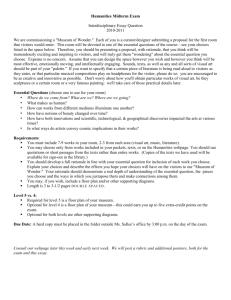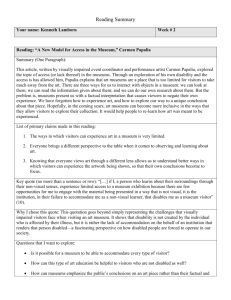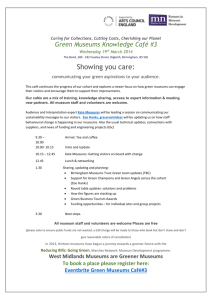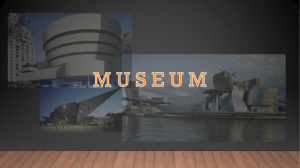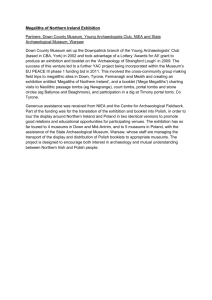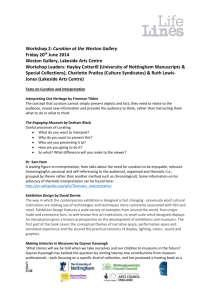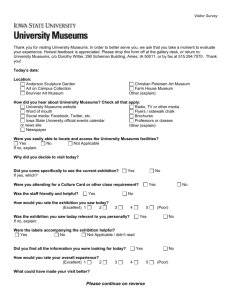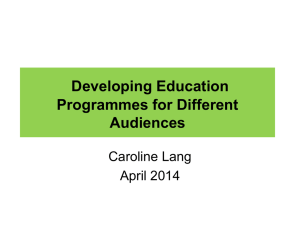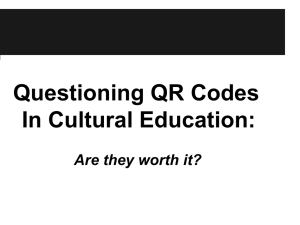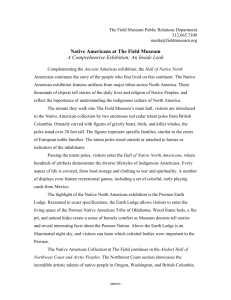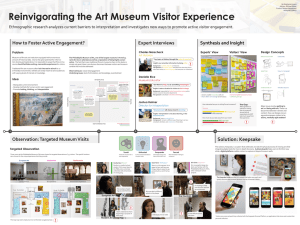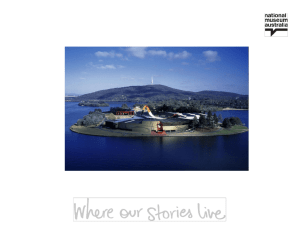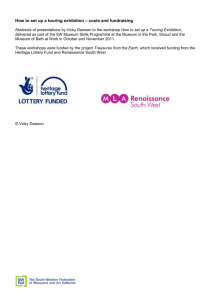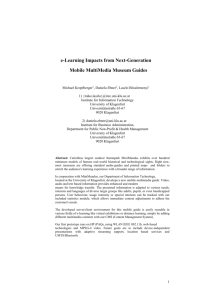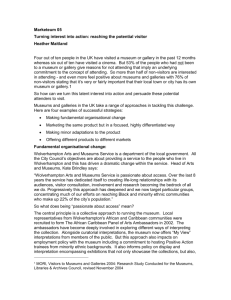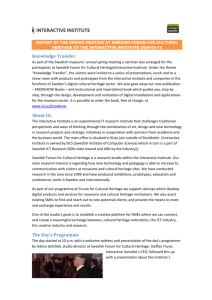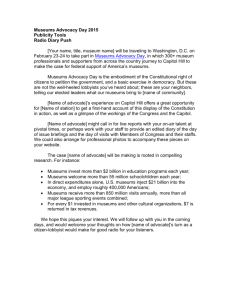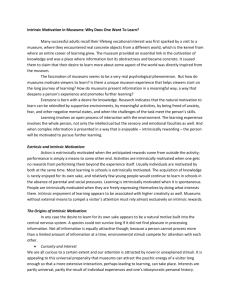Min-Hsiu Liao – Translating museums: across time
advertisement
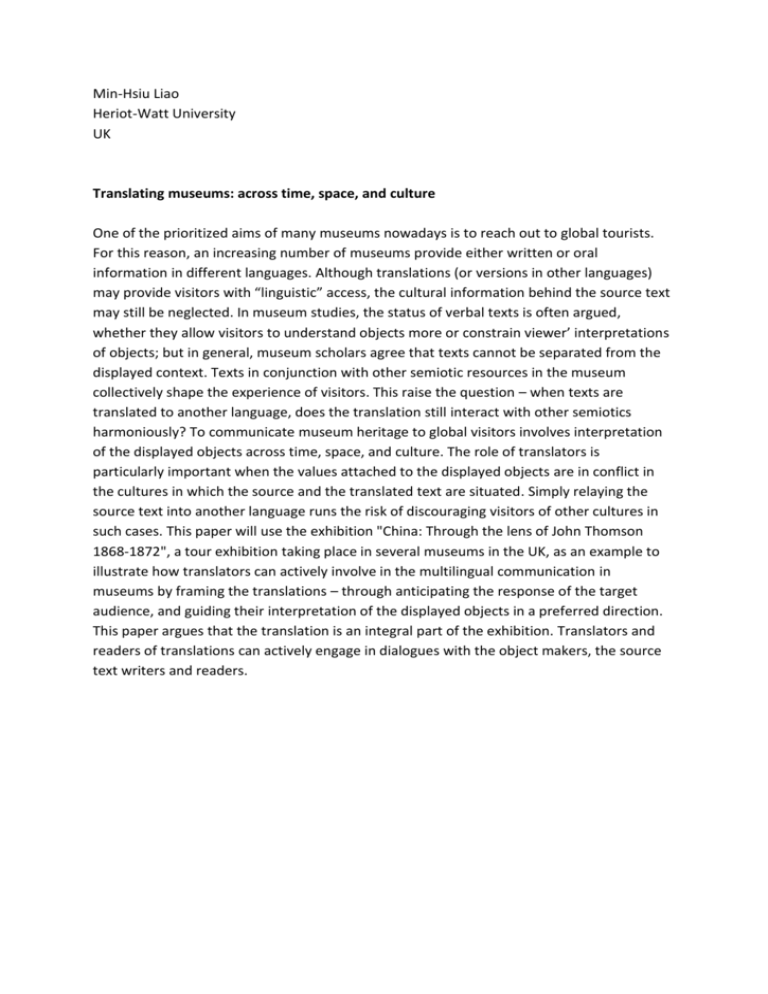
Min-Hsiu Liao Heriot-Watt University UK Translating museums: across time, space, and culture One of the prioritized aims of many museums nowadays is to reach out to global tourists. For this reason, an increasing number of museums provide either written or oral information in different languages. Although translations (or versions in other languages) may provide visitors with “linguistic” access, the cultural information behind the source text may still be neglected. In museum studies, the status of verbal texts is often argued, whether they allow visitors to understand objects more or constrain viewer’ interpretations of objects; but in general, museum scholars agree that texts cannot be separated from the displayed context. Texts in conjunction with other semiotic resources in the museum collectively shape the experience of visitors. This raise the question – when texts are translated to another language, does the translation still interact with other semiotics harmoniously? To communicate museum heritage to global visitors involves interpretation of the displayed objects across time, space, and culture. The role of translators is particularly important when the values attached to the displayed objects are in conflict in the cultures in which the source and the translated text are situated. Simply relaying the source text into another language runs the risk of discouraging visitors of other cultures in such cases. This paper will use the exhibition "China: Through the lens of John Thomson 1868-1872", a tour exhibition taking place in several museums in the UK, as an example to illustrate how translators can actively involve in the multilingual communication in museums by framing the translations – through anticipating the response of the target audience, and guiding their interpretation of the displayed objects in a preferred direction. This paper argues that the translation is an integral part of the exhibition. Translators and readers of translations can actively engage in dialogues with the object makers, the source text writers and readers.
